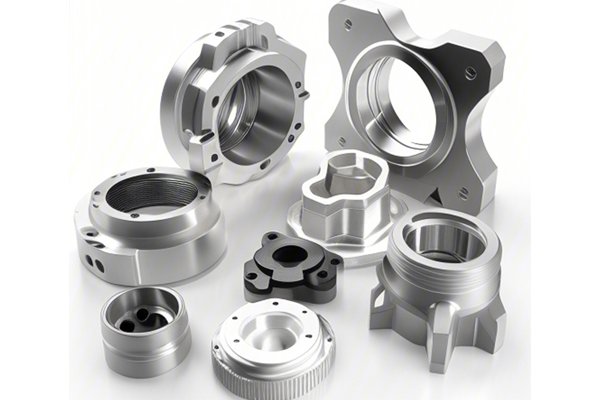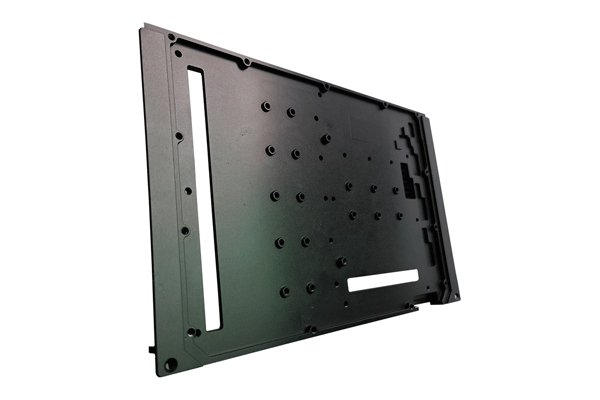Imagine a world where every component you need for your project is manufactured with absolute precision—like a well-oiled machine, turning out parts that fit perfectly the first time, every time. This fantastical realm isn’t just a dream; it’s the reality that CNC turning services strive to create.
In this article, we’ll dive deep into the world of CNC turning, unraveling its magic, exploring how it revolutionizes manufacturing, and understanding why precision is not just a luxury, but a necessity in today’s fast-paced industrial landscape. So, grab a cup of coffee, sit back, and let’s embark on this insightful journey together!
—
What is CNC Turning?
CNC turning, or Computer Numerical Control turning, is a manufacturing process where a rotating workpiece is shaped by a stationary cutting tool. Think of it as a sculptor meticulously chiseling away at a block of marble, creating a masterpiece from raw material. The CNC machine executes precise movements based on programmed instructions, allowing manufacturers to produce incredibly detailed and complex parts.
But why is this process so crucial? It provides a level of accuracy unmatched by manual methods, reducing waste and increasing production efficiency. Whether you’re producing automotive components, medical devices, or aerospace parts, CNC turning can meet and exceed your precision needs.
—
Why Choose CNC Turning Services?
When it comes to manufacturing, choosing the right method can be the difference between success and failure. With CNC turning services, you gain access to numerous benefits:
Unmatched Precision
In the world of manufacturing, precision isn’t just an advantage; it’s a requirement. CNC turning services employ advanced technology that allows for tolerances of just a few microns. This means that you can expect parts that are not just good but extraordinarily accurate. When parts fit precisely, assembly becomes smoother, and functionality is ensured.
Efficiency and Consistency
Imagine trying to wear a shirt made by hand; it may not fit perfectly every time. Now, think about a factory producing custom-built shirts using precise cutting machines. The result? Perfectly fitted shirts every single time! CNC turning operates in a similar manner. Once the initial programming is complete, it can replicate the same cuts and measurements with remarkable consistency, allowing companies to ramp up production while maintaining quality control.
Flexibility in Design
One of the most exciting aspects of CNC turning is its flexibility. Designers can easily modify CAD models to experiment with different designs without the need for extensive retooling. This means that whether you need a single prototype or a large batch of parts, CNC turning can adapt quickly to meet your needs.
Cost-Effective Production
Although the initial setup for CNC turning may seem high, the long-term savings are significant. The reduction in waste, coupled with faster production times, leads to lower manufacturing costs. Furthermore, fewer errors mean less rework, further enhancing cost efficiency. It’s like having a magic wand that grants you savings, efficiency, and precision all at once!
—
How Does CNC Turning Work?
Now that we’ve covered the ‘why,’ let’s dive into the ‘how.’ Understanding the CNC turning process will provide you with a clearer picture of what goes on behind the scenes.
Step 1: Designing the Part
Every journey begins with a map. In CNC turning, the map is the CAD (Computer-Aided Design) drawing, which outlines the exact specifications of the part to be manufactured. Designers outline every detail, from dimensions to tolerances, creating a digital blueprint.
Step 2: Programming the CNC Lathe
With the blueprint in hand, it’s programming time! The CNC lathe needs to be instructed on how to move and operate. This is where skilled programmers transform the CAD design into G-code—a language that CNC machines understand. Think of it as translating your master plan into a secret code only the machine can decipher.
Step 3: Setting Up the Machine
Now comes the real magic! Operators prepare the CNC lathe by installing the required tools and setting up the workpiece. This step is crucial because the correct setup ensures the machine will create the part exactly as designed.
Step 4: Machining the Part
With everything set, it’s time for the CNC lathe to work its magic. As the machine spins the workpiece, the cutting tool moves back and forth to shape the material according to the programmed instructions. This process continues until the part is complete, resembling the designer’s vision.
Step 5: Quality Control
Just like a diligent chef tweaks their dish after tasting it, quality control plays a vital role in CNC turning. Finished parts undergo inspections to ensure they meet the required specifications and tolerances. This step ensures that only the highest quality parts make it to the final stage.
—
Applications of CNC Turning Services
CNC turning is not a one-size-fits-all solution; it’s a versatile process that finds its application in various industries:
Automotive Industry
From engine parts to custom wheels, the automotive industry demands precision and reliability. CNC turning services help manufacturers produce components that can withstand high stress and performance levels, ensuring your car runs smoothly.
Aerospace Sector
In aerospace manufacturing, the stakes are higher. The slightest deviation can lead to catastrophic failures. CNC turning offers the precision required for parts like landing gear components, turbine blades, and structural elements, making air travel safe and efficient.
Medical Devices
The medical field is all about precision, whether it’s surgical instruments or implants. CNC turning services allow for the creation of finely detailed components that meet stringent health regulations, ultimately improving patient safety.
Consumer Electronics
As we shrink technology into smaller devices, the need for precision parts has only increased. Think of your smartphone or tablet—each component must fit seamlessly. CNC turning provides the micro-level accuracy necessary for high-performance electronics.
—
The Future of CNC Turning Services
As we look towards the horizon, the future of CNC turning services is bright and filled with potential. Innovations in technology, such as the rise of automation and artificial intelligence, are set to enhance the capabilities of CNC machining. Picture a world where machines not only perform tasks but also learn and adapt their processes in real-time, optimizing efficiency even further.
Additional tools, such as 3D scanning and digital twins, will enhance quality control processes, providing real-time feedback and adjustments. The integration of IoT (Internet of Things) devices will also contribute to smarter manufacturing floors, where machines communicate and collaborate to achieve peak performance.
—
Final Thoughts: Why CNC Turning is a Game Changer
CNC turning services are reshaping the landscape of manufacturing. By embracing precision, efficiency, and flexibility, these services have become indispensable for industries worldwide.
Whether you’re a small business OEM or a large-scale manufacturer, understanding the impact of CNC turning can enhance your products and propel your success. So, the next time you think about manufacturing precision parts, remember that CNC turning services are not just a service—they’re a gateway to revolutionizing the way we create.
By investing in these advanced manufacturing techniques, you’re not only ensuring the quality of your products but also embracing a future where innovation and precision go hand in hand. So, what are you waiting for? Dive into the realm of CNC turning and unlock endless possibilities for your manufacturing needs!
—






